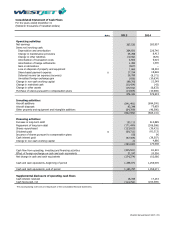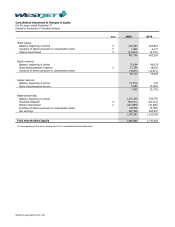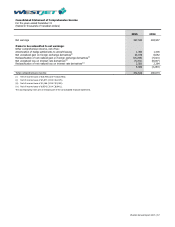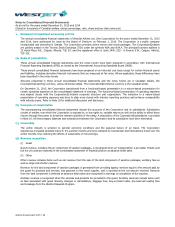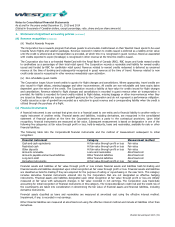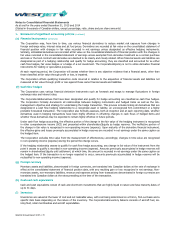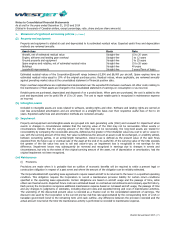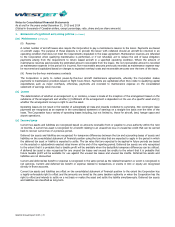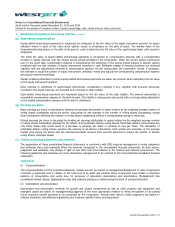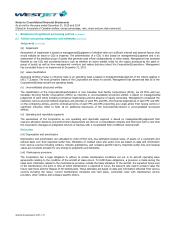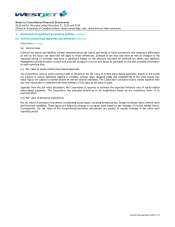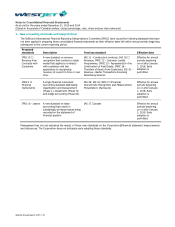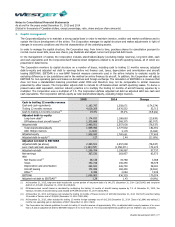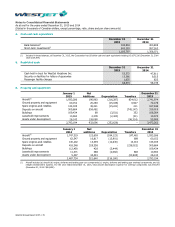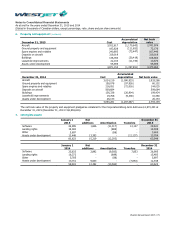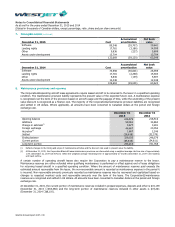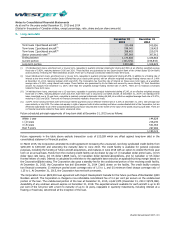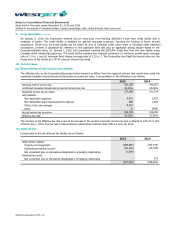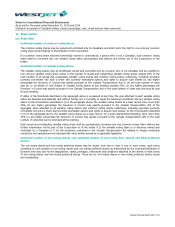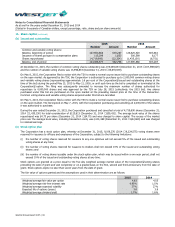Westjet 2015 Annual Report Download - page 76
Download and view the complete annual report
Please find page 76 of the 2015 Westjet annual report below. You can navigate through the pages in the report by either clicking on the pages listed below, or by using the keyword search tool below to find specific information within the annual report.
Notes to Consolidated Financial Statements
As at and for the years ended December 31, 2015 and 2014
(Stated in thousands of Canadian dollars, except percentage, ratio, share and per share amounts)
WestJet Annual Report 2015 | 74
1. Statement of significant accounting policies (continued)
(r) Critical accounting judgments and estimates (continued)
Judgments (continued)
(iii) Impairment
Assessment of impairment is based on management’s judgment of whether there are sufficient internal and external factors that
would indicate an asset or CGU is impaired. The determination of a CGU is also based on management’s judgment and is an
assessment of the smallest group of assets that generate cash inflows independently of other assets. Management has assessed
WestJet as one CGU and considered factors such as whether an active market exists for the output produced by the asset or
group of assets as well as how management monitors and makes decisions about the Corporation’s operations. Management
has concluded there is no impairment at December 31, 2015.
(iv) Lease classification
Assessing whether a lease is a finance lease or an operating lease is based on management’s judgment of the criteria applied in
IAS 17 – Leases. The most prevalent leases of the Corporation are those for aircraft. Management has determined that all of the
Corporation’s leased aircraft are operating leases.
(v) Unconsolidated structured entities
The classification of the Corporation’s participation in nine Canadian Fuel Facility Corporations (FFCs), six US FFCs and two
Canadian De-Icing Facility Corporations (DFCs) as interests in unconsolidated structured entities is based on management’s
judgement of each entity including contractual relationships and the absence of equity ownership. Management considered the
restricted, narrow and well-defined objectives and activities of each FFC and DFC, the financial dependence of each FFC and DFC
on the contracting airlines, and the contractual terms of each FFC and DFC preventing any single airline from having control or
significant influence. Refer to Note 16 for additional disclosures of the Corporation’s interest in unconsolidated structured
entities.
(vi) Operating and reportable segments
The assessment of the Corporation as one operating and reportable segment is based on management’s judgement that
resource allocation decisions and performance assessments are done at a consolidated company and fleet level with a view that
the Corporation manages an integrated network of markets with a consolidated fleet of different sized aircraft.
Estimates
(vii) Depreciation and amortization
Depreciation and amortization are calculated to write-off the cost, less estimated residual value, of assets on a systematic and
rational basis over their expected useful lives. Estimates of residual value and useful lives are based on data and information
from various sources including vendors, industry publications, and company-specific history. Expected useful lives and residual
values are reviewed annually for any change to judgments and estimates.
(viii) Maintenance provisions
The Corporation has a legal obligation to adhere to certain maintenance conditions set out in its aircraft operating lease
agreements relating to the condition of the aircraft at lease return. To fulfill these obligations, a provision is made during the
lease term. Estimates related to the maintenance provision include the likely utilization of the aircraft, the expected future cost
of the maintenance, the point in time at which maintenance is expected to occur, the discount rate used to present value the
future cash flows and the lifespan of life-limited parts. These estimates are based on data and information obtained from various
sources including the lessor, current maintenance schedules and fleet plans, contracted costs with maintenance service
providers, other vendors and company-specific history.



